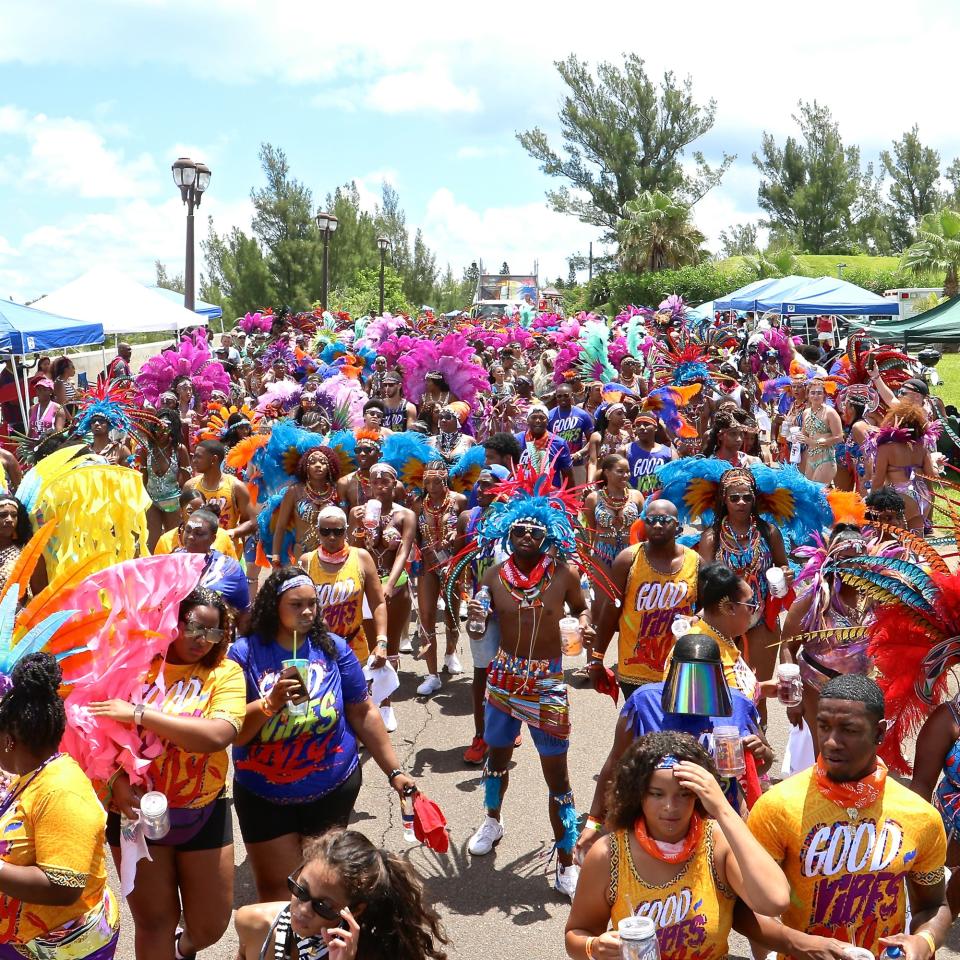The Caribbean Carnivals You Don’t Want to Miss This Summer
This is the eighth time I’ve found myself squeezed between strangers belting out lyrics in unison below a truck’s booming music. “Vibes up from the time that we reach. Drinks up, now the madness release. We having a good time, having a good time. We don't have no time for bad mind.” We raise our plastic cups to the moving bar beside us to receive another splash of rum, our energy drink of choice for the next eight hours.
This time, the location is Bermuda. There’s only one thing that could rival the island’s gorgeous beaches, and it’s this moment, full of joy. Thousands of bodies are draped in ornate, sparkling jewels. A rainbow of colorful feathers in front of me stretch toward the sky. Two strangers approach one another to stomp their feet against the pavement. We’ve barely slept, marching our way to party after party, but that doesn’t matter, because this tradition is best when it’s immersive. It doesn’t matter your gender, age, race, or body type—the only prerequisite is to show up, let go, and “get on bad.” This is the magic of carnival: everyone is uninhibited, connected by sound, movement, and the celebration of life.
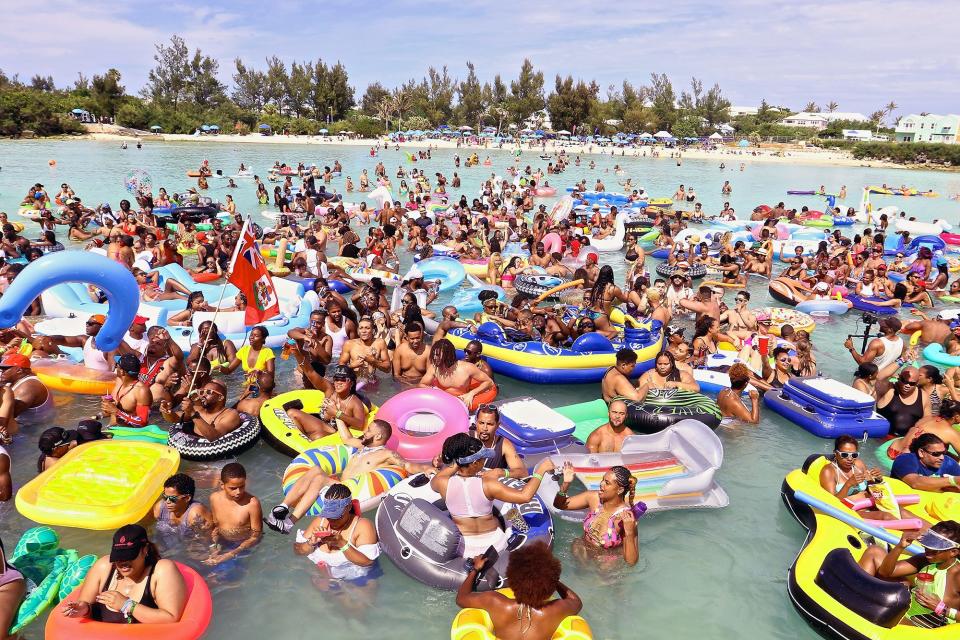
While Brazil and Trinidad’s annual festivals are well documented around the world, carnival takes place on most Caribbean islands, and in many U.S. and European cities. Even Japan has taken it on, with its own annual street celebration that includes international artists and dedicated participants who rehearse dance choreography weeks before the main event. The history of Carnival is a complex one, rooted in colonialism and defiance. With the end of slavery, freed Africans in the Caribbean created their own celebrations from which Carnival was born. These traditions are still alive today, evident in elaborate headdresses and costumes, chanting, and the pulsing rhythms of steel drums.
For the Carnival first timer, there are a few introductory words to know.
Soca: This type of music played during carnival originated in Trinidad and Tobago and is short for “soul of calypso.” It fuses African and East Indian musical elements that are reflective of the island’s diverse demographic. Many carnival goers will say that “soca is life.”
Fete: A fete is another word for a party (it means party in French). During carnival, expect to hear people list the fetes they are going to, ranging from beach to boat locations.
J’ouvert: A fete that begins early in the morning—j’ouvert comes from the French “jour ouvert,” meaning daybreak. Many consider j’ouvert to be a spiritual experience, and it includes revelers who cover their body in paint, oil and mud until the sun rises.
Wine: This is a circular hip movement and the dance of choice. At any moment, you should be ready to “take a wine,” without holding back.
Bands: The group that you join to dance for “pretty mas”—short for masquerade—is called a band. Bands wear different costumes and represent many different themes. Many bands will spend months with designers to create costumes which debut at a fashion show.
De Road: The street where carnival occurs is called “de road.” Thousands of people gather with their bands to dance for miles.
Here are just a few places around the world where you too can take a wine:
Bermuda
Bermuda’s carnival, called Heroes Weekend, is one of the newest kids on the block, and the perfect option for both newbies and the seasoned bacchanalist. Founded by local DJ and soca enthusiast Jason Sukdeo in 2015, the celebration takes place over four days around the island every June, and includes an incredible on-the-water fete experience, called Raft Up. Here, yachts pull up to Shelly Bay while attendees float on colorful rafts near a barge blasting soca music in the middle of a crystal clear ocean. Other events include a concert with soca superstar Machel Montano, and a night fete, Glow, which requires attendees to wear all white in a stunning garden setting. On Carnival Monday, bands line the streets in full costume, including intricate feather headdresses and beaded details by the popular Nova Mas band. After de road, masqueraders relax at one of Bermuda’s pristine beaches (Horseshoe or Tobacco Bay), rescued from days of rum drinking by a gigantic and flavorful fried fish sandwich from a Bermudian institution: Art Mel’s Spicy Dicy.
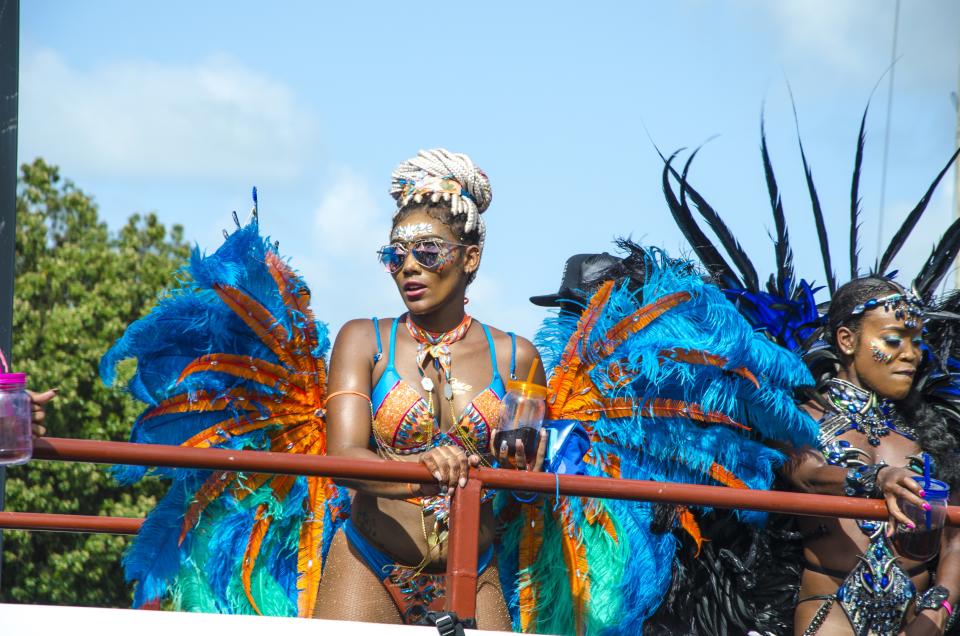
Barbados
Barbados’ carnival, Crop Over, takes its historical roots from the end of the sugar cane harvest during slavery. This carnival is a two-month-long celebration beginning in June and ending after the first weekend of August. There are several competitions, including Pic-o-De-Crop Monarch, where top Calypso artists perform for crowds of thousands in order to win the title of king or queen of the crop. The grand finale, Grand Kadooment, draws people—including Rihanna—to take a wine on de road from day into the night. Crop Over has quickly become one of the Caribbean’s biggest parties, and for good reason. Don’t miss one of the greatest fetes of all, Caesar’s Army’s A.M. Bush, which Rihanna has also attended. Here, revelers meet in the middle of a field to dance to soca music while covering their bodies in paint and powder. Participants are even welcome to make their way down a waterslide at the end—because why not?
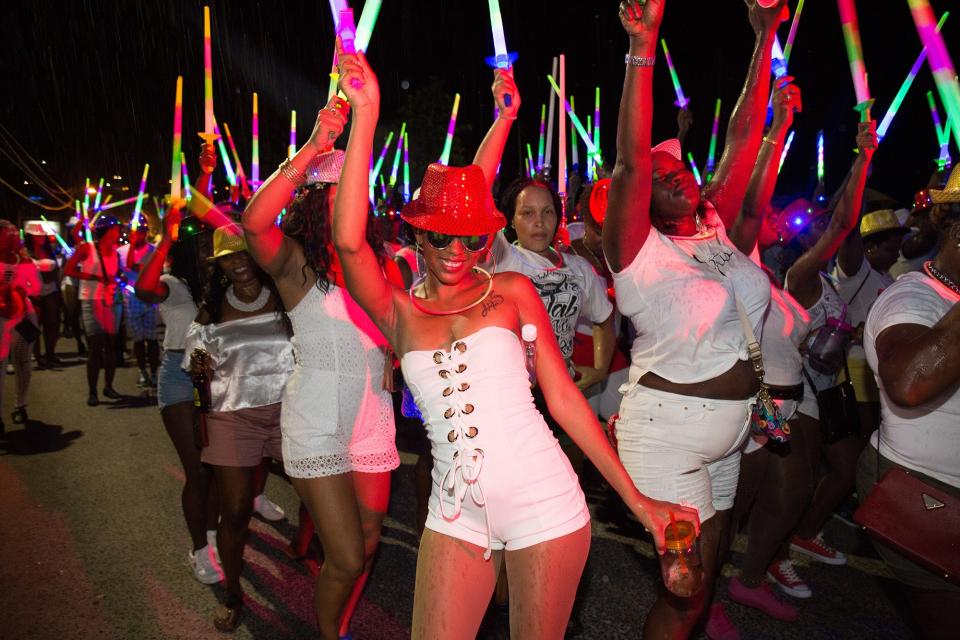
Grenada
Every August, Grenada hosts the most energetic J’ouvert in the world: Spicemas carnival. On Monday night, a sea of people march through St. George with fluorescent wands lighting up the sky. Later in the celebration, bodies slicked in black oil play “jab.” The tradition gets its name from the French word “diable,” or devil, and symbolizes a mockery of slave masters. This J’ouvert continues for two days, so cool down at La Sagesse beach before Carnival Tuesday.
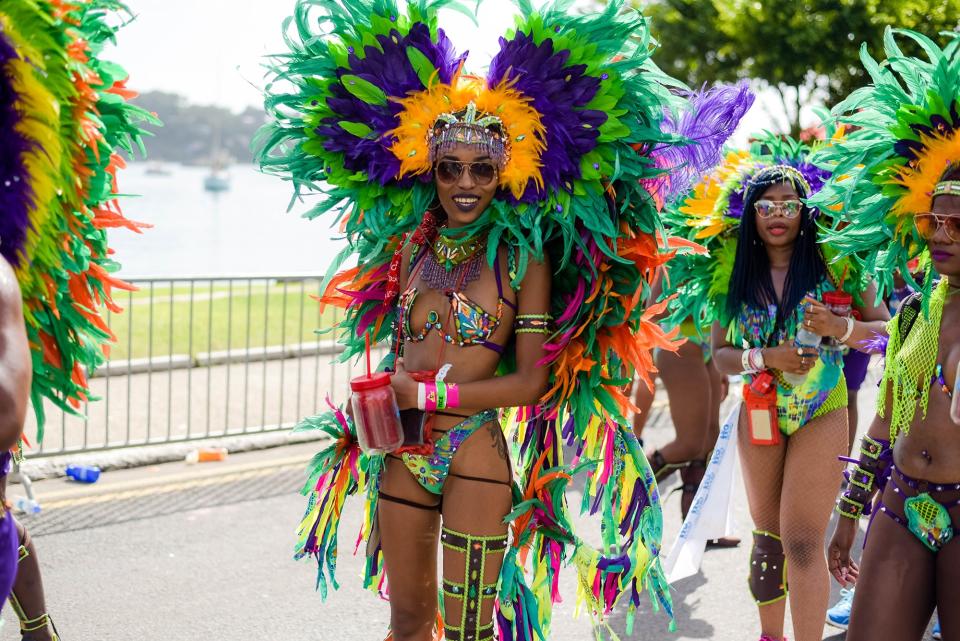
St. Lucia
One of the most interesting parts of St. Lucia’s growing Soleil carnival is its take on soca music. An increasingly popular (and addictive) sub-genre of the music, called Dennery Segment, is rooted in St. Lucian percussion and Kreyòl lyrics. Its sounds can be heard far beyond St. Lucia in every Caribbean carnival. On the island, Soleil is celebrated over 26 days in July and includes beach fetes, street parties, and Calypso concerts. A night at Sugar Beach, with the mighty Piton mountains nearby, is the best way to close out days of nonstop action.
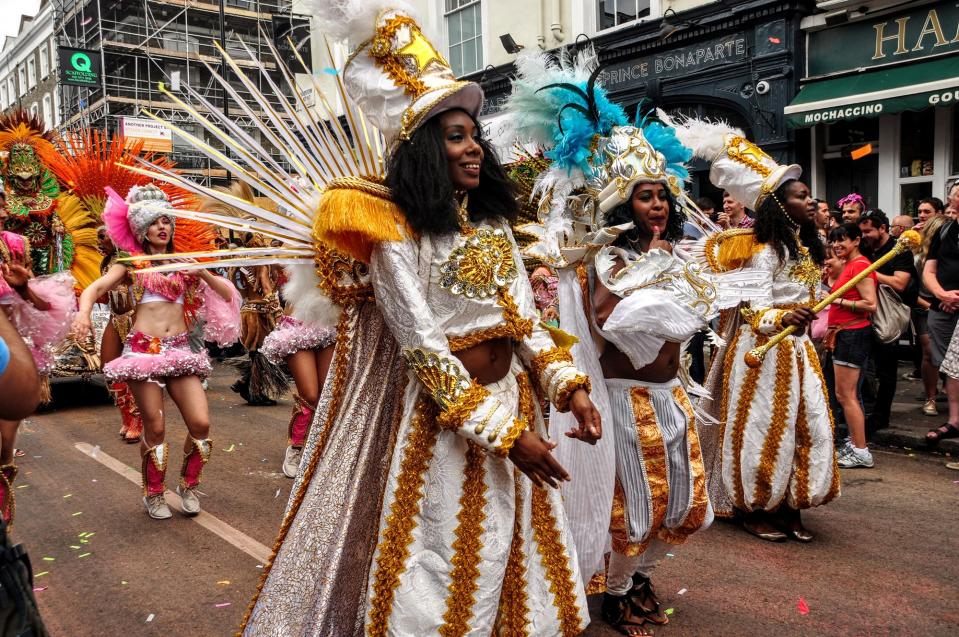
London
Not to be left out of the island escapades, London’s large population of Caribbeans get road ready across the pond every August in Notting Hill. Carnival first began here in 1966 and has become one of the largest street festivals in Europe. On Sunday, even children dress up to march down the street in a parade just for them. Up to 50,000 people participate in Carnival Monday, called the Grand Finale, after which there are even more parties, and food stands serving up jerk chicken and roti. Because at Carnival, the vibes doesn’t end unless you want them to.
